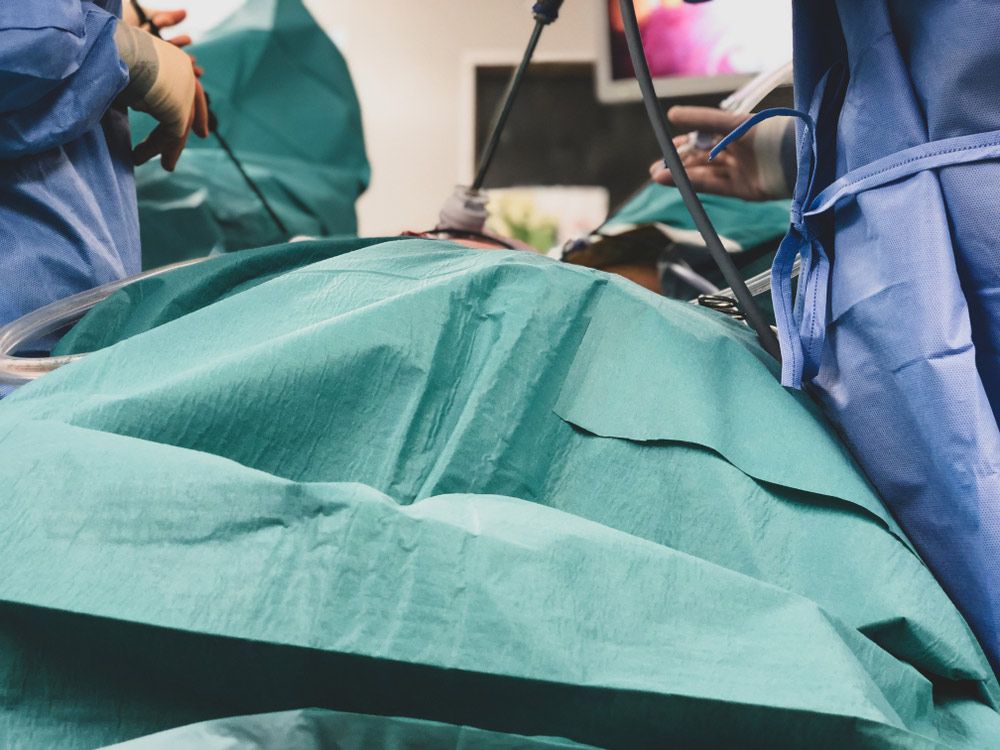We Treat Abdominal Wall Hernias in Brisbane
Wide Range of Surgical Treatments
Support for Enhanced Recovery After Surgery (ERAS)
Non-Judgemental Practitioners
Abdominal Wall Hernias
Learn about procedures to treat Abdominal Wall Hernias, including:
Umbilical Hernia Repair
Umbilical (belly button) hernia repair can be performed open or laparoscopically, depending on the size of your hernia and other factors. Both approaches can usually be done as a day case. Pain is minimal due to the use of local anaesthetic and nerve blocks. A mesh (medical grade plastic sheet) is often placed in the tissue layers over the hernia repair to decrease the risk of the hernia coming back.
Indications
The decision to recommend surgical repair of umbilical hernias comes down to assessment of the risk of complication (strangulation of fat or bowel in the hernia) and your symptoms. Umbilical hernia repair is usually a very straightforward operation that is very safe. Therefore, if you are experiencing significant symptoms, it is best to have them repaired. Asymptomatic umbilical hernias generally do not need to be repaired.
Side Effects
Umbilical hernia repair has all the usual small risks of surgery (anaesthetic, bleeding, infection) but also some unique risks. Infection of the mesh, if placed, is a very rare but potentially serious problem. All hernia repairs have a risk of hernia recurrence long term. Depending on various patient factors, this is between 2 and 5%.
Groin Hernia Repair
Groin hernia repair may be an inguinal hernia repair or femoral hernia repair. Groin hernia repair can be performed open or laparoscopically, depending on the size of your hernia and other factors. The laparoscopic approach generally offers a faster recovery and return to work. Both approaches can usually be done as a day case. Pain is minimal due to the use of local anaesthetic and nerve blocks. A mesh (medical grade plastic sheet) is usually placed in the tissue layers over the hernia repair to decrease the risk of the hernia coming back.
Indications
The decision to recommend surgical repair of groin hernias comes down to assessment of the risk of complication (strangulation of fat or bowel in the hernia) and your symptoms. All femoral hernias are at a high risk of complication/strangulation and should therefore generally be repaired. Inguinal hernias, depending on the subtype, are at a lower risk of such complication and can therefore often be left alone, if asymptomatic and not interfering with your daily activities.
Side Effects
Groin hernia repair has all the usual small risks of surgery (anaesthetic, bleeding, infection) but also some unique risks. Nerves in the area can be drawn into the scar tissue caused by the mesh. This can cause chronic niggling discomfort or numbness in the area. For 1% of patients, this can be severe enough to require further investigation and treatment. 5 – 7% of patients will notice an occasional mild twinge or numbness. All hernia repairs have a risk of hernia recurrence long term. Depending on various patient factors, this is between 2 and 5%.
Incisional Hernia Repair
Incisional hernia repair can be performed open or laparoscopically, depending on the size of your hernia and other factors. Both approaches will usually require a few days in hospital. A mesh (medical grade plastic sheet) is often placed in the tissue layers over the hernia repair to decrease the risk of the hernia coming back. Pain relief is usually necessary due to many sutures being required to secure the mesh in place. Plastic drains occasionally need to be left at the surgical site for a few days to drain away any tissue fluid from the old hernia space.
Indications
The decision to recommend surgical repair of incisional hernias comes down to assessment of the risk of complication (strangulation of fat or bowel in the hernia, bowel obstruction) and your symptoms. Asymptomatic incisional hernias, those that are soft and don’t cause much discomfort, generally do not need to be repaired.
Side Effects
Incisional hernia repair has all the usual small risks of surgery (anaesthetic, bleeding, infection) but also some unique risks. Infection of the mesh, if placed, is a very rare but potentially serious problem. All hernia repairs have a risk of hernia recurrence long term. Depending on various patient factors, this is between 2 and 5%.












